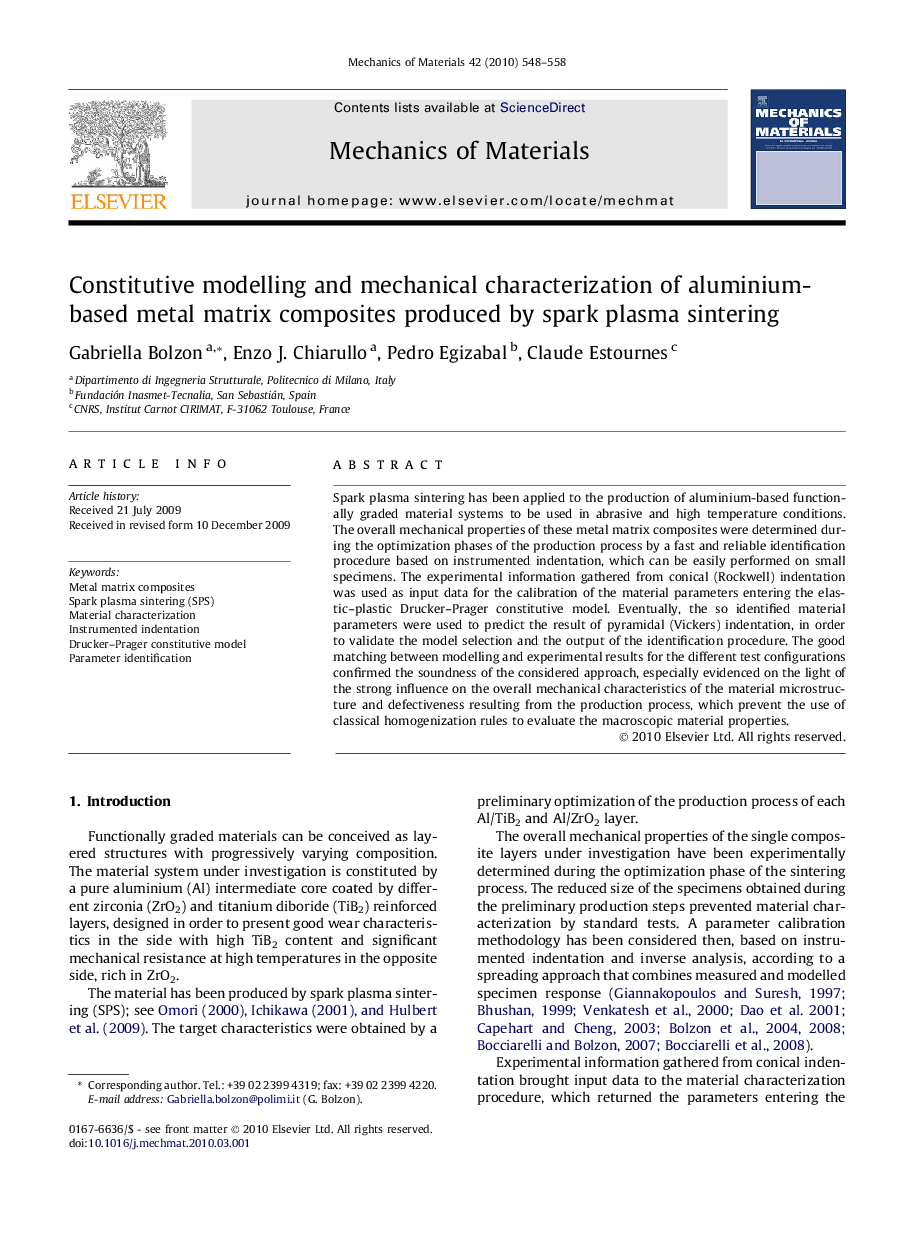| Article ID | Journal | Published Year | Pages | File Type |
|---|---|---|---|---|
| 800865 | Mechanics of Materials | 2010 | 11 Pages |
Spark plasma sintering has been applied to the production of aluminium-based functionally graded material systems to be used in abrasive and high temperature conditions. The overall mechanical properties of these metal matrix composites were determined during the optimization phases of the production process by a fast and reliable identification procedure based on instrumented indentation, which can be easily performed on small specimens. The experimental information gathered from conical (Rockwell) indentation was used as input data for the calibration of the material parameters entering the elastic–plastic Drucker–Prager constitutive model. Eventually, the so identified material parameters were used to predict the result of pyramidal (Vickers) indentation, in order to validate the model selection and the output of the identification procedure. The good matching between modelling and experimental results for the different test configurations confirmed the soundness of the considered approach, especially evidenced on the light of the strong influence on the overall mechanical characteristics of the material microstructure and defectiveness resulting from the production process, which prevent the use of classical homogenization rules to evaluate the macroscopic material properties.
